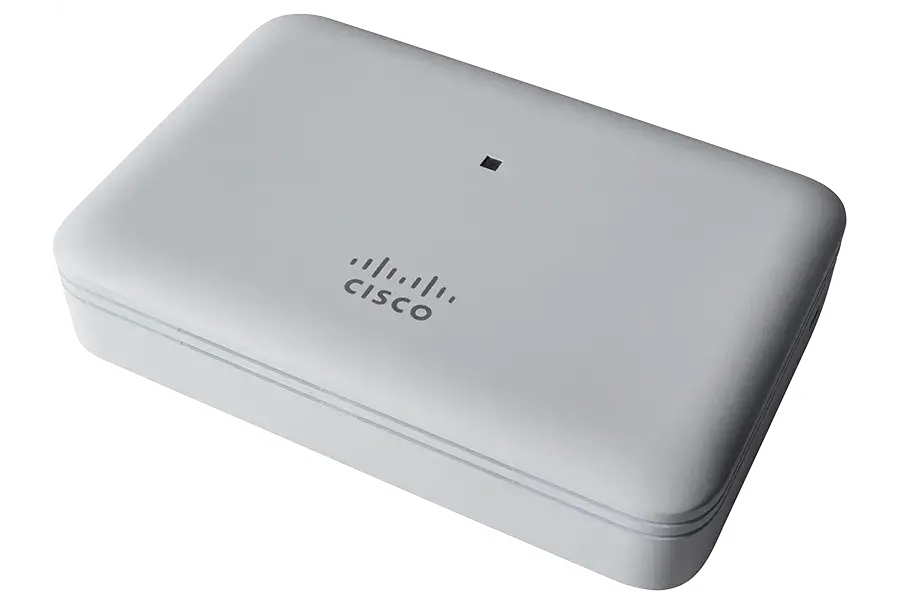
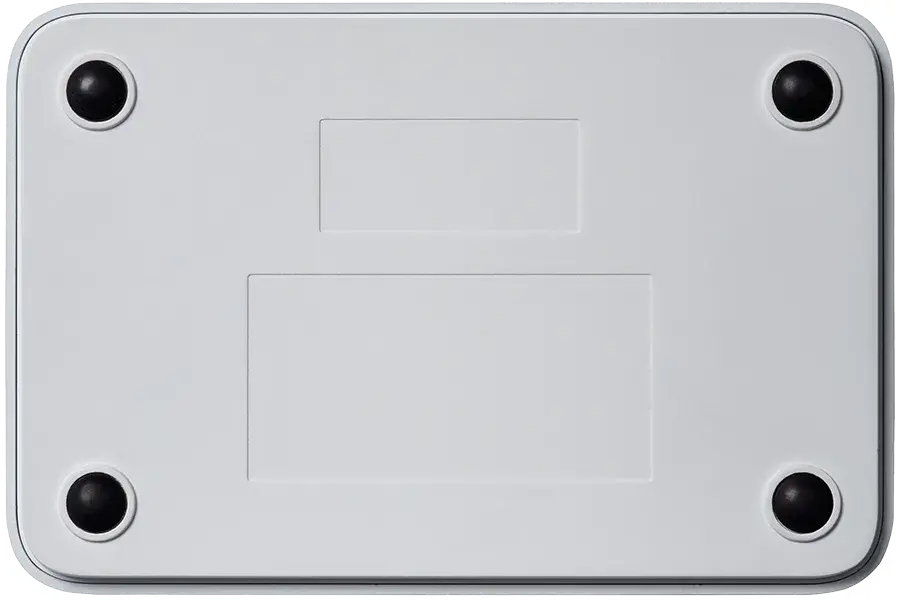
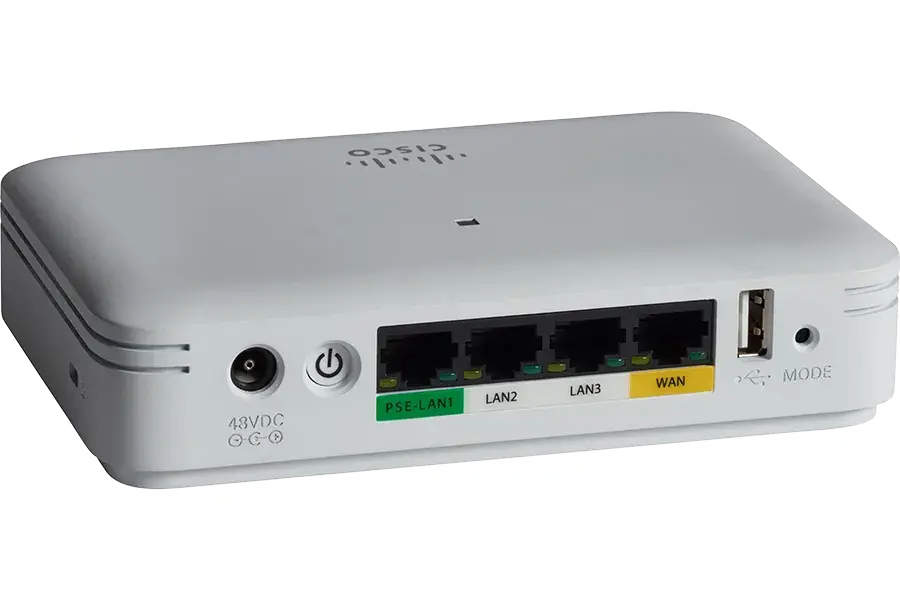
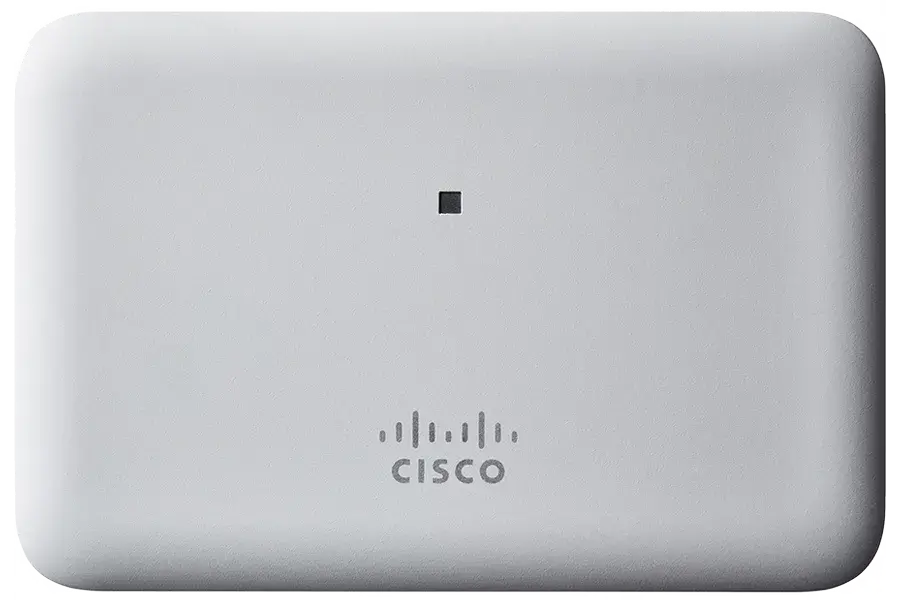
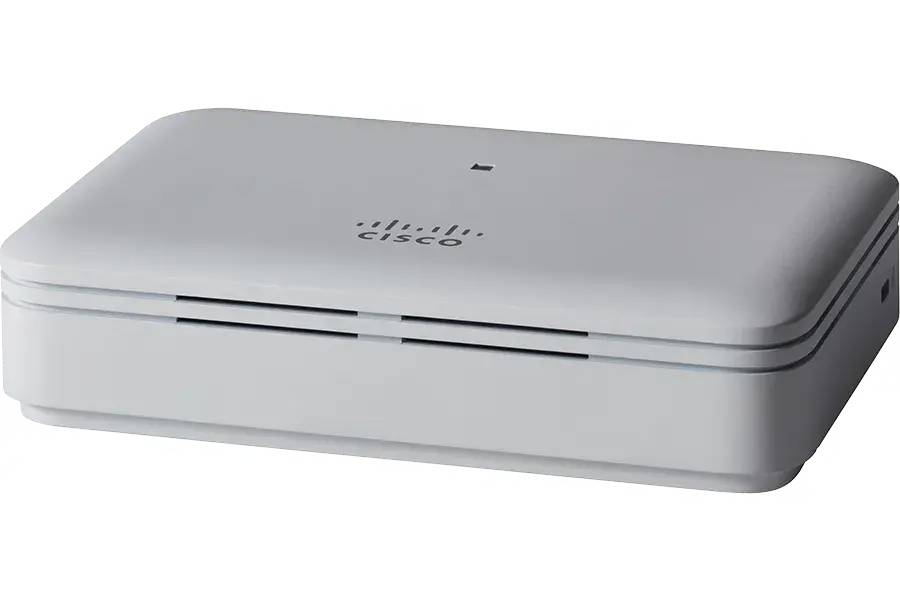
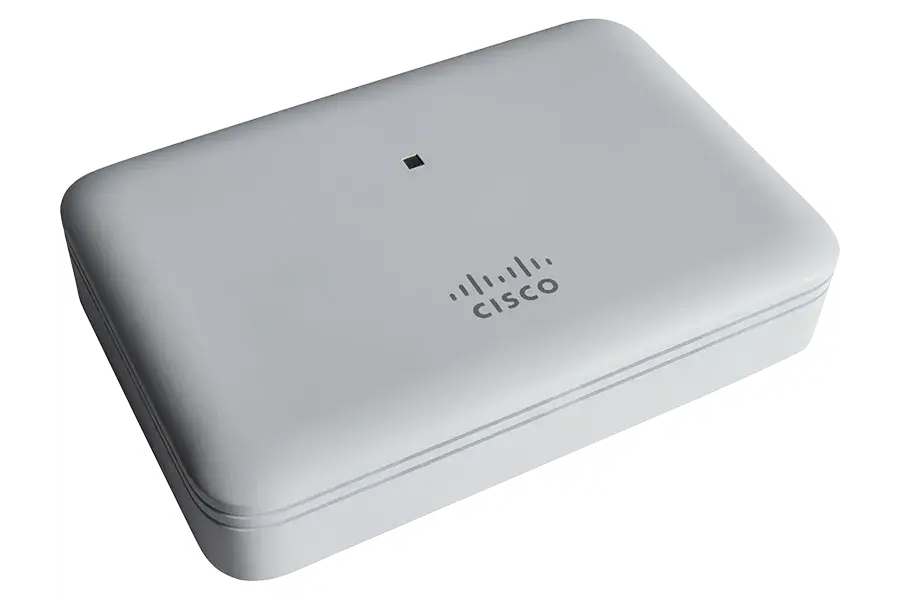
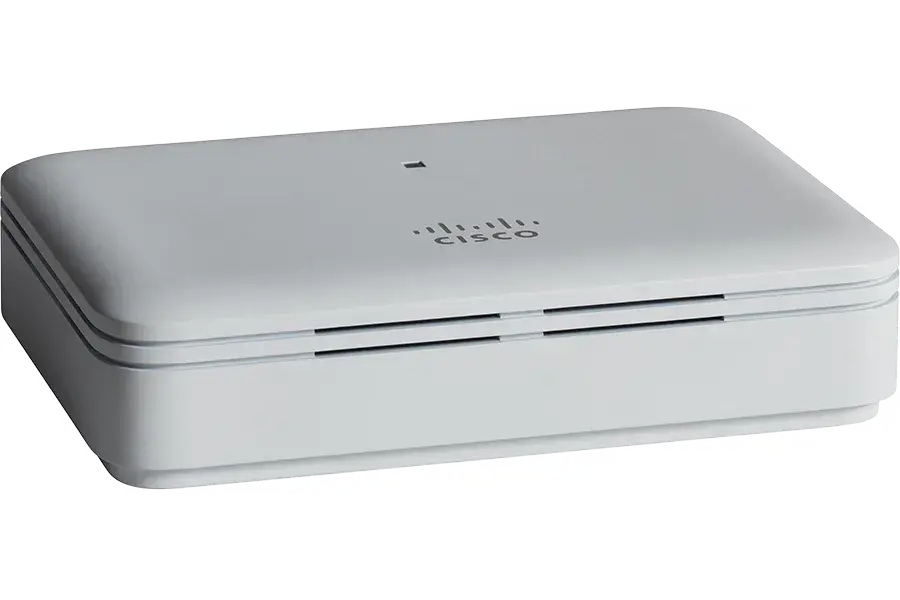
Cisco Aironet 1815t Series Access Point
Perfect for the teleworker or for a micro-branch deployment, this easy-to-install OfficeExtend access point provides secure wired and wireless access for organizations with employees who work from home.
Description
Product overview
The Cisco® Aironet® 1815t Access Point (Figure 1) offers a highly secure enterprise wired and wireless connection to the home, micro-branch, or any type of remote sites. No longer will geography or the elements play a role in delaying productivity, as the 1815t extends the corporate network to teleworkers, mobile workers, and even micro-sites. The access points connect to the home or on-site broadband Internet access and establish a highly secure tunnel to the corporate network. This tunnel allows remote employees access to data, voice, video, and cloud services for a network experience consistent with that at the corporate office. The 1815t supports highly secure access to corporate data and personal connectivity for teleworkers’ home devices, with segmented home traffic.
Features and benefits
The Cisco Aironet 1815t helps improve workforce productivity, business resiliency, and job flexibility while reducing travel costs and carbon emissions. The 1815t targets commercial, enterprise, and service provider networks across all industries. Employees who need reliable and consistent access to networked business services at home, and micro-branches where remote workers require the same network connectivity as at the corporate site, are both excellent candidates for the 1815t.
In recent years corporate users have increasingly preferred wireless access as their form of network connectivity, due to its convenience. With this shift, there is an expectation that wireless should not slow down users’ day-to-day work, but should enable a high-performance experience. The 1815t delivers industry-leading performance, with highly secure and reliable wireless connections that provide a robust, mobile end-user experience.
Cisco User Defined Network, a feature available in Cisco DNA Center, allows IT to give end users control of their very own wireless network partition on a shared network. End users can then remotely and securely deploy their devices on this network. Perfect for university dormitories or extended hospital stays, Cisco User Defined Network grants both device security and control, allowing each user to choose who can connect to their network. (Available second half of calendar year 2020.)
The Wi-Fi 6 readiness dashboard is a new dashboard in the Assurance menu of Cisco DNA Center. It will look through the inventory of all devices on the network and verify device, software, and client compatibility with the new Wi-Fi 6 standard. After upgrading, advanced wireless analytics will indicate performance and capacity gains as a result of the Wi-Fi 6 deployment. This is an incredible tool that will help your team define where and how the wireless network should be upgraded. It will also give you insights into the access point distribution by protocol (802.11 ac/n/abg), wireless airtime efficiency by protocol, and granular performance metrics.
- MU-MIMO : Multiuser (MU) Multiple-Input Multiple-Output (MU-MIMO) allows simultaneous data transmission to multiple 802.11ac Wave 2–capable clients to improve the client experience. Prior to MU-MIMO, 802.11n and 802.11ac Wave 1 access points could transmit data to only one client at a time. This was typically referred to as Single-User MIMO (SU-MIMO).
- Real-time service extender : Extends real-time services such as voice, wireless, video, and data to remote locations that have no IT staff. No longer will geography or climate be the reason for lost work hours. Working at home is now like being at the office.
- Robust security : Using the same profile as at the corporate office, the Aironet 1815t establishes a secure Datagram Transport Layer Security (DTLS) connection between the access point and the controller to offer remote WLAN connectivity.
- Gigabit Ethernet ports : Three local Gigabit Ethernet ports are available to securely connect wired devices to the network. Traffic from wired devices can be tunneled back to a wireless LAN controller (for compatible controllers) or be locally switched by the access point. One of these Ethernet ports can also provide Power over Ethernet (PoE) out to power a device such as an IP phone or a security camera.
- Increased wireless performance : The Aironet 1815t supports the latest 802.11ac Wave 2 standard for higher performance, greater access, and higher-density networks. With simultaneous dual radios and dual band with 802.11ac Wave 2 MU-MIMO functionality, this access point can handle the increasing number of high-bandwidth devices that will soon become a common part of the network.
- Wired access : The 1815t allows wired access via a single RJ-45 10/100/1000 auto detection port. The access points come with three local Gigabit Ethernet ports and one uplink Gigabit Ethernet port, allowing for a variety of connections.
- Mounting : The 1815t can be configured at the corporate office and shipped, for a simple install at the remote office. The integrated antennas optimize wireless coverage when resting on a desk.
Product specifications
- Authentication and security :
- Advanced Encryption Standard (AES) for Wi-Fi Protected Access 3 (WPA3), WPA2, WPA
- 802.1X, RADIUS Authentication, Authorization, and Accounting (AAA)
- 802.11r
- 802.11i
- Software
- Cisco Unified Wireless Network Software with AireOS Wireless Controllers Release 8.5.103/85CCO or later
- Supported WLAN controllers
- Cisco 2500 Series Wireless Controllers, Cisco 3500 Series Wireless Controllers, Cisco Wireless Controller Module for ISR G2, Cisco Wireless Services Module 2 (WiSM2) for Catalyst ® 6500 Series Switches, Cisco 5500 Series Wireless Controllers, Cisco Flex ® 7500 Series Wireless Controllers, Cisco 8500 Series Wireless Controllers, Cisco Catalyst 9800 Series Wireless Controllers
- Maximum clients
- Maximum number of associated wireless clients: 200 per Wi-Fi radio, in total 400 clients per access point
- 802.11ac
- 2x2 single-user/multiuser MIMO with two spatial streams
- Maximal Ratio Combining (MRC)
- 20-, 40-, and 80-MHz channels
- PHY data rates up to 866.7 Mbps (80 MHz on 5 GHz)
- Packet aggregation: A-MPDU (Tx/Rx), A-MSDU (Rx)
- 802.11 Dynamic Frequency Selection (DFS)
- Cyclic Shift Diversity (CSD) support
- Ethernet ports
- Authentication with 802.1X or MAC filtered
- Dynamic VLAN or per port
- Traffic locally switched or tunneled back to wireless LAN controller
- Data rates supported
- 802.11a: 6, 9, 12, 18, 24, 36, 48, 54 Mbps
- 802.11b/g: 1, 2, 5.5, 6, 9, 11, 12, 18, 24, 36, 48, 54 Mbps
- 802.11n data rates on 2.4 GHz:
- Maximum number of non-overlapping channels
- A (A regulatory domain):
- 2.412 to 2.462 GHz; 11 channels
- 5.180 to 5.320 GHz; 8 channels
- 5.500 to 5.700 GHz; 8 channels
- (excludes 5.600 to 5.640 GHz)
- 5.745 to 5.825 GHz; 5 channels
- B (B regulatory domain):
- 2.412 to 2.462 GHz; 11 channels
- 5.180 to 5.320 GHz; 8 channels
- 5.500 to 5.720 GHz; 12 channels
- 5.745 to 5.825 GHz; 5 channels
- C (C regulatory domain):
- 2.412 to 2.472 GHz; 13 channels
- 5.745 to 5.825 GHz; 5 channels
- D (D regulatory domain):
- 2.412 to 2.462 GHz; 11 channels
- 5.180 to 5.320 GHz; 8 channels
- 5.745 to 5.825 GHz; 5 channels
- E (E regulatory domain):
- 2.412 to 2.472 GHz; 13 channels
- 5.180 to 5.320 GHz; 8 channels
- 5.500 to 5.700 GHz; 8 channels
- (excludes 5.600 to 5.640 GHz)
- F (F regulatory domain):
- 2.412 to 2.472 GHz; 13 channels
- 5.250 to 5.350 GHz; 4 channels
- 5.725 to 5.825 GHz; 4 channels
- G (G regulatory domain):
- 2.412 to 2.472 GHz; 13 channels
- 5.745 to 5.865 GHz; 7 channels
- H (H regulatory domain):
- 2.412 to 2.472 GHz; 13 channels
- 5.180 to 5.320 GHz; 8 channels
- 5.745 to 5.825 GHz; 5 channels
- I (I regulatory domain):
- 2.412 to 2.472 GHz; 13 channels
- 5.180 to 5.320 GHz; 8 channels
- K (K regulatory domain):
- 2.412 to 2.472 GHz; 13 channels
- 5.180 to 5.320 GHz; 8 channels
- 5.500 to 5.620 GHz; 7 channels
- 5.745 to 5.805 GHz; 4 channels
- N (N regulatory domain):
- 2.412 to 2.462 GHz; 11 channels
- 5.180 to 5.320 GHz; 8 channels
- 5.745 to 5.825 GHz; 5 channels
- Q (Q regulatory domain):
- 2.412 to 2.472 GHz; 13 channels
- 5.180 to 5.320 GHz; 8 channels
- 5.500 to 5.700 GHz; 11 channels
- R (R regulatory domain):
- 2.412 to 2.472 GHz; 13 channels
- 5.180 to 5.320 GHz; 8 channels
- 5.660 to 5.700 GHz; 3 channels
- 5.745 to 5.805 GHz; 4 channels
- S (S regulatory domain):
- 2.412 to 2.472 GHz; 13 channels
- 5.180 to 5.320 GHz; 8 channels
- 5.500 to 5.700 GHz; 11 channels
- 5.745 to 5.825 GHz; 5 channels
- T (T regulatory domain):
- 2.412 to 2.462 GHz; 11 channels
- 5.280 to 5.320 GHz; 3 channels
- 5.500 to 5.700 GHz; 8 channels
- (excludes 5.600 to 5.640 GHz)
- 5.745 to 5.825 GHz; 5 channels
- Z (Z regulatory domain):
- 2.412 to 2.462 GHz; 11 channels
- 5.180 to 5.320 GHz; 8 channels
- 5.500 to 5.700 GHz; 8 channels
- (excludes 5.600 to 5.640 GHz)
- 5.745 to 5.825 GHz; 5 channels
- Note: This varies by regulatory domain. Refer to the product documentation for specific details for each regulatory domain.
- A (A regulatory domain):
- Available transmit power settings
- 2.4 GHz
- 20 dBm (100 mW)
- 17 dBm (50 mW)
- 14 dBm (25 mW)
- 11 dBm (12.5 mW)
- 8 dBm (6.25 mW)
- 5 dBm (3.13 mW)
- 2 dBm (1.56 mW)
- -1 dBm (0.78 mW)
- 5 GHz
- 20 dBm (100 mW)
- 17 dBm (50 mW)
- 14 dBm (25 mW)
- 11 dBm (12.5 mW)
- 8 dBm (6.25 mW)
- 5 dBm (3.13 mW)
- 2 dBm (1.56 mW)
- -1 dBm (0.78 mW)
- Note: The maximum power setting will vary by channel and according to individual country regulations. Refer to the product documentation for specific details.
- 2.4 GHz
- Integrated antennas
- 2.4 GHz, gain 2 dBi
- 5 GHz, gain 3 dBi
- Interfaces
- 1 x 10/100/1000BASE-T autosensing (RJ-45)
- Three 10/100/1000BASE-T ports (local Ethernet ports), including one PoE out port:
- PoE out provides 802.3af when access point is powered by Cisco local power supply (AIR-PWR-D=)
- Indicators
- Status LED indicates boot loader status, association status, operating status, boot loader warnings, boot loader errors
- Dimensions (W x L x H)
- Access point (without mounting bracket): 6 x 4 x 1.5 in (152.4 x 101.6 x 37.7mm)
- Weight
- Access point without mounting bracket or any other accessories: 13 oz (365 g)
- Environmental
- Operating
- Temperature: 32° to 104°F (0° to 40°C)
- Humidity: 10% to 90% (non-condensing)
- Max. altitude: 9843 ft (3,000 m) @ 40°C
- Non-operating (storage and transportation)
- Temperature: -22° to 158°F (-30° to 70°C)
- Humidity: 10% to 90% (non-condensing)
- Max. altitude: 15,000 ft (4,500 m) @ 25°C
- Operating
- System
- 512 MB DRAM
- 128 MB flash
- 710 MHz quad-core
- Input power requirements
- 44 to 52V DC
- Power draw
- 8.5W (no PoE out and no USB)
- PoE output
- 802.3af: 15.4W at port
- Physical security
- Kensington lock slot
- Accessories
- Physical security kit: AIR-SEC-50= (sold separately), with 50 pcs. security screws used to secure the access point onto wall-mounting bracket, 50 pcs. RJ-45 caps and 2 pcs. unlock keys used to block physical access to Ethernet ports
- Warranty
- Limited Lifetime Hardware Warranty
- Compliance
- Safety:
- UL 60950-1
- CAN/CSA-C22.2 No. 60950-1
- UL 2043
- IEC 60950-1
- EN 60950-1
- Radio approvals:
- FCC Part 15.247, 15.407
- RSS-247 (Canada)
- EN 300.328, EN 301.893 (Europe)
- ARIB-STD 66 (Japan)
- ARIB-STD T71 (Japan)
- EMI and susceptibility (Class B)
- FCC Part 15.107 and 15.109
- ICES-003 (Canada)
- VCCI (Japan)
- EN 301.489-1 and -17 (Europe)
- EN 50385
- IEEE standards:
- IEEE 802.11a/b/g, 802.11n, 802.11h, 802.11d
- IEEE 802.11ac
- Security:
- 802.11i, WPA3, WPA2, WPA
- 802.1X
- AES
- Extensible Authentication Protocol (EAP) types:
- EAP-Transport Layer Security (TLS)
- EAP-Tunneled TLS (TTLS) or Microsoft Challenge Handshake Authentication Protocol Version 2 (MSCHAPv2)
- Protected EAP (PEAP) v0 or EAP-MSCHAPv2
- EAP-Flexible Authentication via Secure Tunneling (FAST)
- PEAP v1 or EAP-Generic Token Card (GTC)
- EAP-Subscriber Identity Module (SIM)
- Multimedia:
- Wi-Fi Multimedia (WMM)
- Other:
- FCC Bulletin OET-65C
- RSS-102
- Safety:
